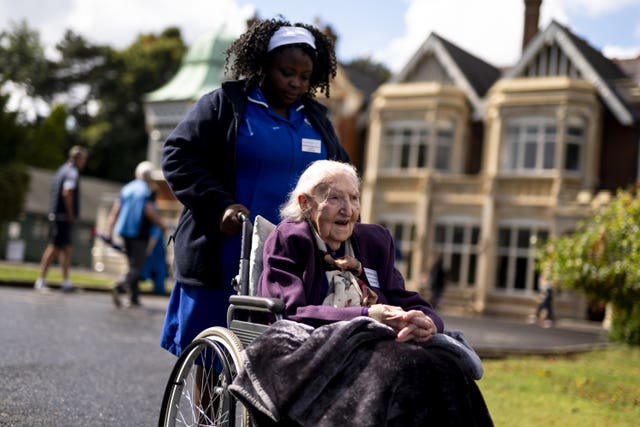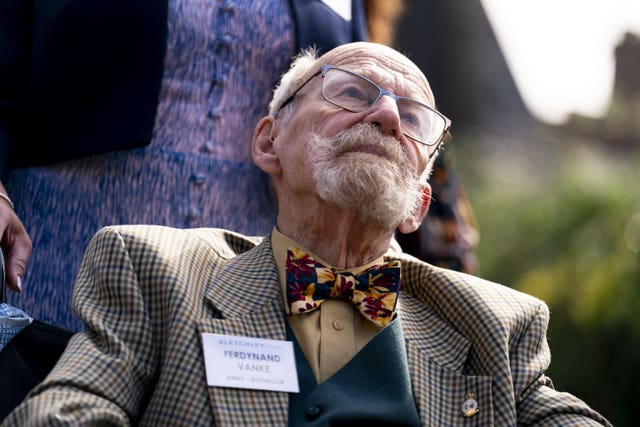WW2 veteran codebreakers reunite at Bletchley Park
British codebreakers, including Alan Turning, were based at the site during the war and fed crucial information to Allied forces ahead of D-Day.

Codebreaking Second World War veterans smiled as they reunited at the scene of their wartime service in Bletchley Park, near Milton Keynes.
British codebreakers, including Alan Turning, were based at the site during the war and fed crucial information to Allied forces in the weeks leading up to the largest sea invasion in history on D-Day in 1944.
The veterans smiled and chatted as they gathered at the annual reunion held at the site on Sunday and posed for photographs in the sunshine.

Among them was 99-year-old Dorothy Doll, who is turning 100 later this month and worked at the facility between 1943 and 1945.
During the visit, which was Ms Doll’s first time attending the reunion, she was shown a Hollerith machine that allowed code-breaking work, previously done by hand, to be conducted much more quickly.
Ms Doll had worked as a Hollerith Operator at Bletchley Park and, after the war, worked for the Red Cross in Germany where she married her husband.
Ruth Bourne, who was among a group of five British veterans that were awarded France’s highest military honour in 2018 for their role in liberating the country, was also in attendance and smiled as she posed for a photograph among her fellow ex-servicewomen.
At the once-secret venue, wartime codebreakers used early forms of computer intelligence – cryptanalytical machines called Bombes – to break the Enigma code used by the Nazis to encrypt messages, changing the course of the war and saving millions of lives in the process.

Their work enabled British intelligence to move more quickly and act upon the information the Bletchley team gave them, contributing to a number of key military victories during the war.
It also sparked the industrialisation of codebreaking and helped pave the way for the first forms of the computers used today.
The Princess of Wales has visited the site in previous years, where a memorial features the names of her grandmother, Valerie Glassborow, and her twin sister, Mary, who both worked at the code-breaking facility.

Veteran Audrey Mather attended the reunion on Saturday, having previously met Kate during her visit to Bletchley Park in May 2019.
During the visit, Kate told a group of children it was “really cool” that members of her family had served at the codebreaking centre.





